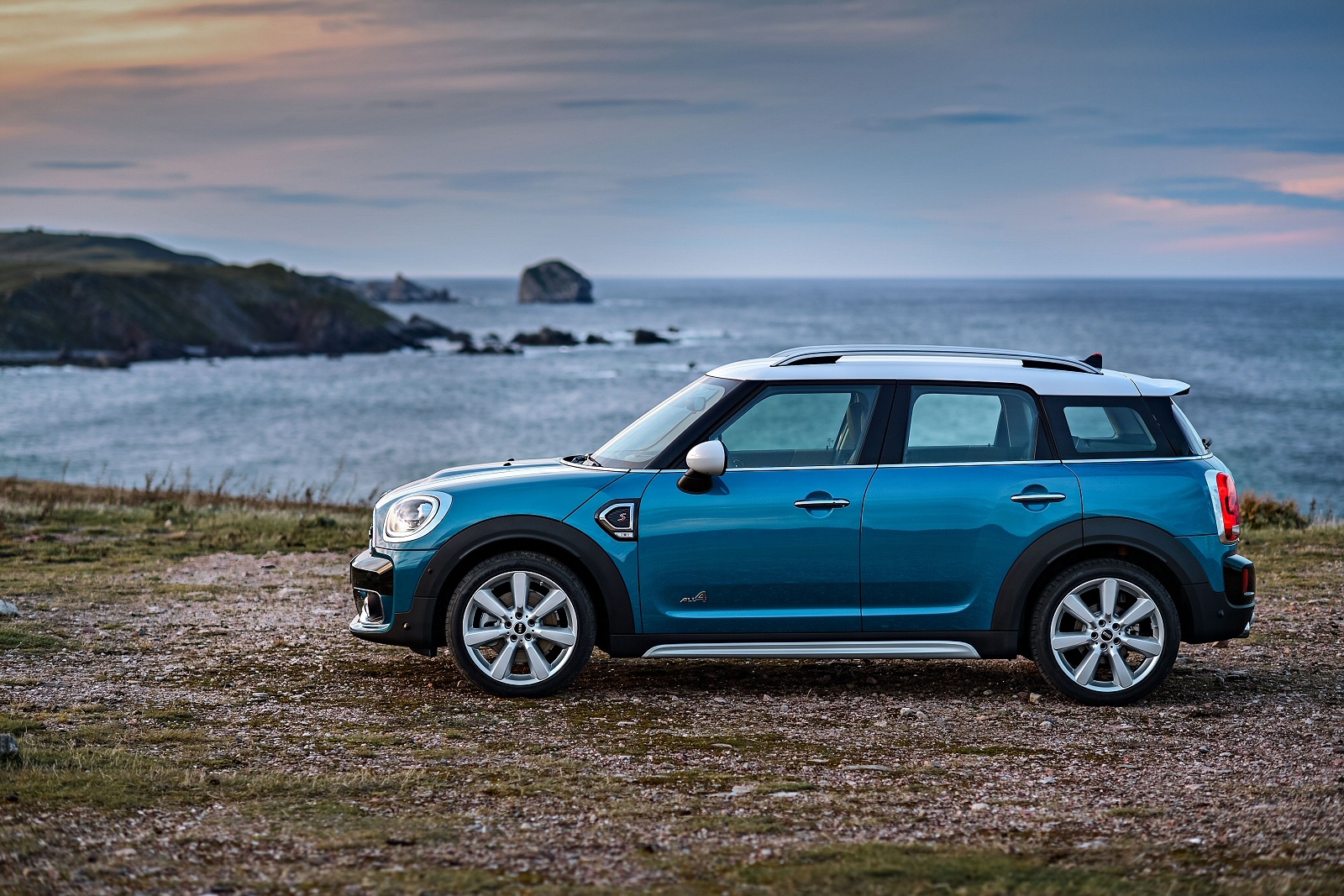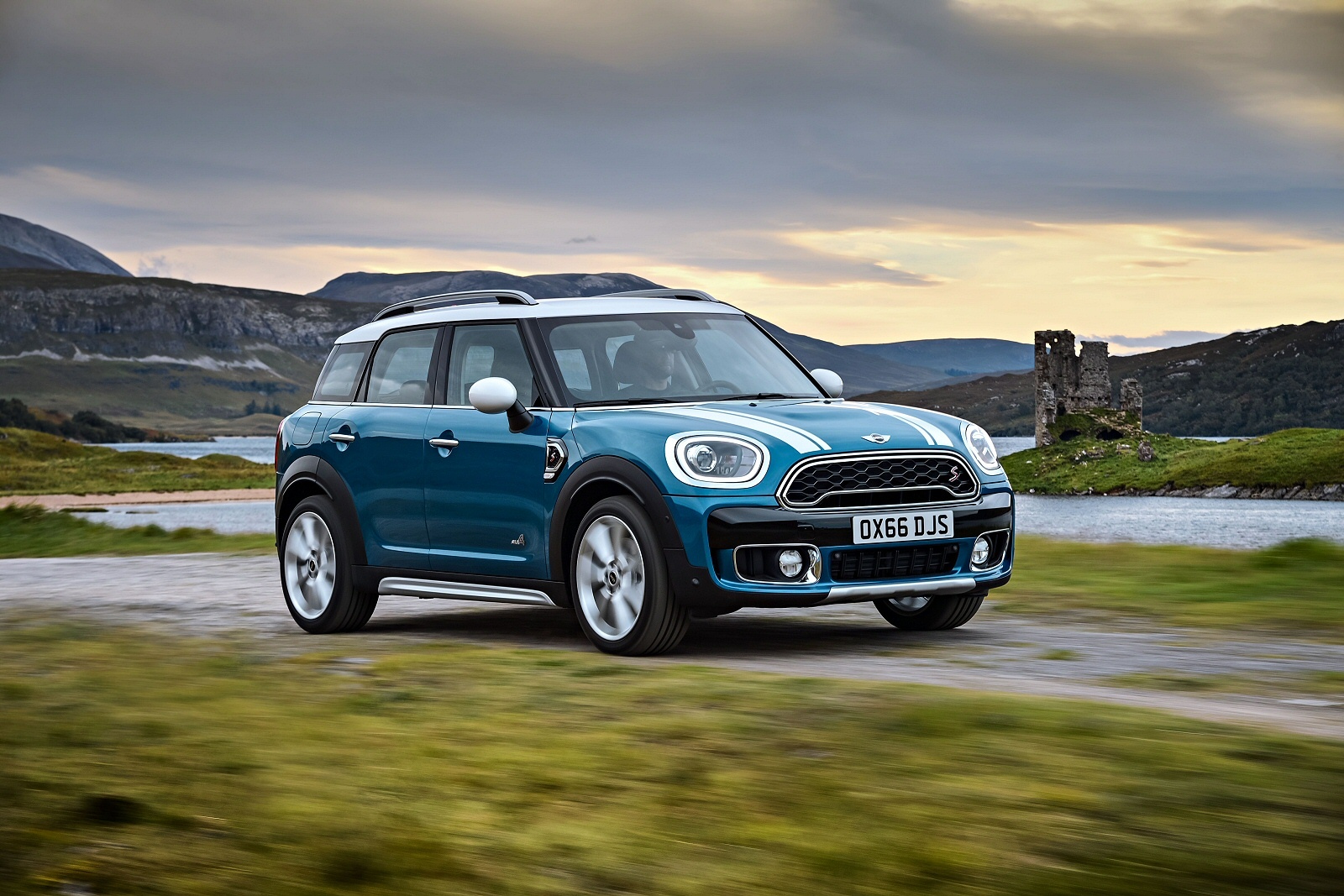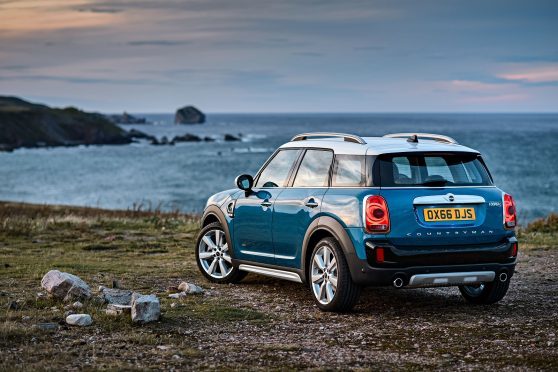The second generation Mini Countryman is the biggest and most versatile model to be launched in the brand’s 57-year history.
With its larger external dimensions and increases in space throughout the cabin and luggage area, it offers a more credible premium alternative to Qashqai-sized family crossover segment rivals.
There’s a bit of interior innovation – and the option of plug-in hybrid tech too. It’s available at launch with a choice of five new engines: two diesels and three petrol-powered variants, all of them featuring Mini’s TwinPower turbo technology.
Most will want one of the 2.0-litre diesels – there’s a 150bhp unit in the Cooper D or a 190bhp powerplant in the Cooper SD that puts out 295lb/ft of toque, providing for a 0-62mph sprint of just 7.7 seconds. The petrol line-up starts with the 136bhp 1.5-litre three-cylinder unit used in the Cooper Countryman. The alternative is the 192bhp 2.0-litre powerplant you’ll find in the pokey Cooper S, a variant able to complete the sprint to 62mph from rest in just 7.5 seconds. Steptronic auto transmission with paddleshifters is optional across the range.

Another option across the line-up is an improved version of Mini’s ALL4 all-wheel drive system. This set-up now reacts more quickly and precisely to changing situations.
The most interesting engine option though, is the plug-in hybrid set-up used in the priciest variant, the Cooper S E ALL4 model.
Here, the 1.5-litre 136bhp Cooper engine is mated with an 88bhp electric motor and the whole package is combined with Steptronic auto transmission and ALL4 4WD.
With this larger Mk2 model, the target market for this car can be much more clearly defined and high-ish pricing can much more easily be justified.
It’s 20cm longer than before with 7.5cm of extra wheelbase length, enlarged dimensions that make it the largest Mini ever made.
You certainly feel that inside, where both driver and front passenger benefit from extended head and shoulder space.
The second row of seating now contains three fully-fledged seats, and the rear door openings have been enlarged, enabling easier entry and exit.
Prices have risen significantly: it’s no longer possible to buy any sort of Countryman for well under £20,000.

Still, given that this car is now large enough to compete in a larger section of the crossover market, you could argue that this is fully justified. The asking figures start at around £22,500 for the least expensive Cooper model and rise to around £30,000 for the car in Cooper SD ALL4 guise.
Throughout the range, there’s the option of finding around £1,500 more for Steptronic automatic transmission.
The Countryman has certainly cleaned up its act. The 2.0-litre diesel unit most will choose returns 64.2mpg on the combined cycle and 113g/km of CO
2
in Cooper D guise – or 61.4mpg and 121g/km on Cooper SD form.
Petrol people get a 1.5-litre motor in the Cooper that returns 51.4mpg and 126g/km. Or a 2.0-litre unit in the Cooper S that manages 45.6mpg and 141g/km.
The efficiency headline with this Mk2 model range is the addition of Mini’s first plug-in hybrid engine, a unit you’ll find in the Cooper S E Countryman ALL4 variant.
